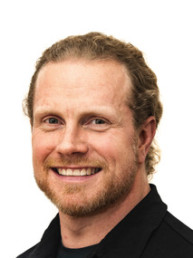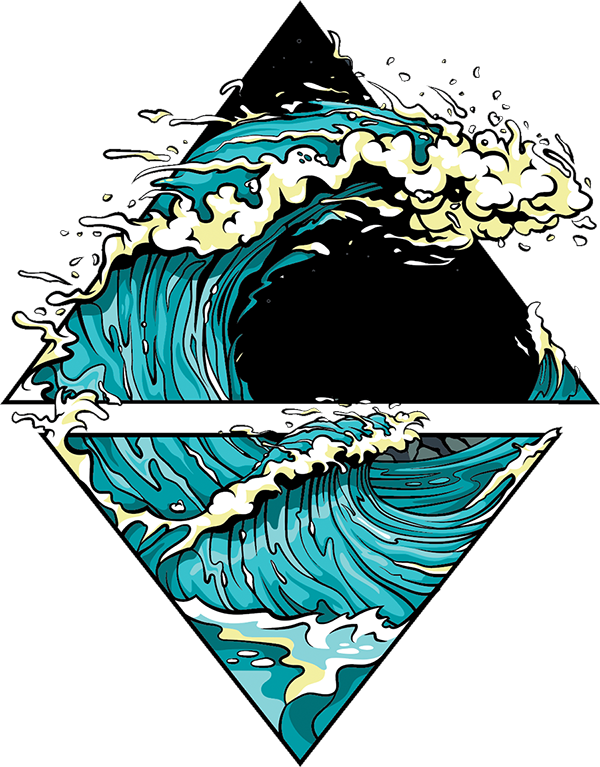Dear Patients,
We are taking a break and will be back for you on August 20th.
Until then, we wish you a wonderful summer.
Kind regards,
Your Orthopedics Boehland









Orthopädie Boehland – thefuncdoc
About me

© Thorsten Bergbach Photography
Ortho-B is a modern orthopaedic speciality practice, where we provide functional, cause oriented care to achieve persistent improvement. The combination of classic orthopaedic methods with manual therapy, fascial therapy (FDM), as well as modern methods such as Shockwave therapy and diagnostics — via ultrasound and posture screen, including assessment protocols, makes for a unique setting.The diverse treatment spectrum includes the entire orthopaedic realm, though the emphasis is on non-operative treatment of acute and degenerative complaints.
Another emphasis is on sports related issues, including return to play and supervision in a competition setting/preparation. Secondary opinion prior to surgical procedures complete the therapeutic spectrum.
Outside of consulting hour’s nutrition coaching, yoga classes, boutique personal training and seminars on various topics all add to the integral treatment concept.

Additional qualifications
- Specialist in orthopedics and trauma surgery
- Additional title manual medicine
- BC in Fascial distortion Model Typaldos
- MRI (ADO)
- Foot surgery (GFFC)
- Acupuncture (DAG)
Sideline activities
- Instructor and med. Consultant Rocktape Germany
- medical advisor to the AFCVBB (American Football Association Berlin Brandenburg)
- Crossfit Level I trainer
Work experience
- 01.2016 – 05.2019:
employed orthopedic specialist at Orthopädie Berlin, Dr. Granes - 01.2015 – 12.2015:
employed orthopedic specialist at Practice Dr. Meinikheim - 10.2007 – 02.2015:
resident, later orthopedic consultant at St. Joseph Hospital, Mrs. Dr. Johnen - 04.2005 – 09.2007:
resident at Charite Benjamin Franklin trauma surgery, Prof. Dr. Ertel
“You never change things by fighting the existing reality. To change something, build a new model that makes the existing model obsolete.„
- Buckminster Fuller
Why a private practice
I want to update the medical landscape in Germany by adding an independent alternative for treatment. My role is to examine, assess and guide along the way. The goal has to be, to sensitive clients for meaningful movement. I want to offer modern orthopaedic as a building block for a better quality of life.
After years in the realm of statutory insurance medicine and patient care, I started to look for an alternative in health care. The vision of a more wholesome/integral orthopaedic model lead me to creating this alternative approach to the health market.
For privately insured patients I will continue to offer my expertise in diagnostics, consultation, treatment planning and therapy. You will be billed in our practice, but reimbursed by your insurance company.
Members of statutory insurance will be billed in the practice, however you will not be reimbursed by your insurance company. These direct payers I want to offer my services as an alternative to their regular health care model. Over the last few years I have learnt and developed treatment options that I couldn’t apply in the regular consultation hours.
General health care is regulated by considerable time and cost constraints, patient commitment often comes too short. A comprehensive medical history, assessment and consultation. This is the starting point of my model, of my accompanying consultation. I don’t want to offer my clients quick symptom focussed fixes, but long term root cause entered treatments that help to mitigate complaints.
General informations
As a private patient, your treatment costs are usually covered by all private health insurance companies in accordance with the
GoÄ (Gebührenordnung für Ärzte).
Patients with statutory health insurance can be treated as self-payers.
We provide all patients for the treatments an invoice according to the (GoÄ).
Direct billing with statutory health insurance companies is not possible!
The practice

Mit dem Laden der Karte akzeptieren Sie die Datenschutzerklärung von Google.
Mehr erfahren
Services
Joint wear and tear occurs regardless of age, even if older people are predominantly affected. Excess weight, sports accidents or hormonal disorders and general wear and tear can lead to overloading of the joints. The primary goal of arthrosis therapy is to treat restrictions in mobility, as well as to achieve pain relief and a reduction in the inflammatory reaction. The treatment can be drug-based or physical, in extreme cases surgery may be necessary.
Bioelectrical impedance analysis (BIA) is a method for determining body composition. It is based on the different conductivity of the human body compartments. With the aid of a BIA device and electrodes attached to the skin, a weak alternating current is passed through the body. The currents are harmless to health and are not noticeable. From the specific electrical resistance that the body has to the current, the height and weight, the body composition (water, fat mass, lean mass, cell mass) and basal metabolic rate can be calculated. While body water and fat-free body mass can be determined exactly, the fat percentage, especially in the case of overweight, can only be calculated imprecisely with conventional methods. Particularly in the case of weight reduction, care must be taken to ensure that the change in diet maintains muscle mass and that the body reduces the energy reserves of the fat mass.
A reduction in bone mass with progressing age is a completely normal painless procedure. If, however, a level is reached which also reduces bone quality, it is called osteoporosis. The bone becomes increasingly “porous”. (The consequences are bone fractures, which occur even at low loads). The process of bone density measurement (DXA method) is very precise. A special form of low dose X-ray is used. The intensity is not comparable to that of a regular X-ray or a CT scan, but rather corresponds to the radiation dose of a transatlantic flight.
Manual therapy is the treatment part of manual medicine and is performed by specially certified doctors. As a rule, it involves the identification of functional disorders of the musculoskeletal system and the resulting treatment. They can include both passive techniques and active exercises. The aim of manual therapy is to restore the interaction between joints, nerves and muscles.
The fascial distortion model is a medical viewpoint that attributes the cause of physical complaints and functional limitations to a deformation of the human fascia. If these fascial distortions are corrected, pain and movement restrictions can be treated effectively, measurably and comprehensibly.
FDM diagnostics is based on three pillars and leads to an independent FDM diagnosis. The interpretation of the patient’s pain gestures is of particular importance. A comprehensive anamnesis and examination complement the FDM findings. Currently, the FDM approach is successfully used for complaints of the musculoskeletal system and for pain mitigation.
Kinesiological Taping according to the principles of Fascial Movement Taping (Rocktape). The application concept is based on muscle chains and fascial lines that support natural movements. The main goal of kinesiological taping is to activate and support the body’s motorsensory system. Pain relief, posture improvement and fluid dynamics are the main focus here. Among other things I also teach courses on these concepts.
Magnetic resonance imaging (MRI) of the musculoskeletal system has now become established in the diagnosis of orthopaedic and trauma cases. Without the risk of radiation exposure, we obtain extremely precise images of the inside of the body. For private patients we regularly carry out MRI examinations ourselves at the Diagnose Centrum Emser Platz. The results can then be discussed with you directly after the examination.
Just five kilos overweight doubles the risk of knee arthrosis. The spine, hip and knee joints are also often affected by wear and tear and inflammation if a patient is overweight or obese. This is why nutritional advice is very useful as a practical service in the orthopaedic practice. With the help of weight management, you can provide targeted relief for patients’ joints, improve their mobility and accelerate rehabilitation.
Posture Screen-App-based posture and movement analysis “Static posture assessment via PSM provides repeatable measurements for anatomical landmarks for which a substantial or near perfect match has been found”
Journal of Phy Ther Sci Vol. 28 (2016) Nr. 12 Dez. p. 3398-3402
The second opinion examination offers the patient the opportunity to obtain a specialist medical opinion from an “independent” point of view. After a detailed discussion with the patient about the symptoms and a thorough examination, the medical approach is explained, diagnostic considerations are presented and the therapeutic procedure is planned. The focus of the medical examination should not be the preparation of partially prefabricated diagnoses (e.g. herniated disc) on the basis of MRI or X-ray images, but the comprehensive physical examination of the patient with recognition of the individual causes for the functional impairment and pain problems. For this purpose, the inclusion of muscular and connective tissue structures (myofascial tissue) in the standard orthopaedic-neurological examination is of decisive importance.
Sensomotoric insoles are different from conventional orthopedic insoles: they imitate walking barefoot as much as possible by activating the foot muscles, do not require a fixed supporting element and still have a biomechanical effect. Activity and training for the foot muscles in everyday life.
Injections with local anaesthetics are used for both therapeutic and diagnostic purposes. By injecting small amounts of a local anaesthetic, for example, the location and cause of the pain can be precisely determined and the therapy plan drawn up accordingly. Longer-lasting effects are also achieved by adding anti-inflammatory drugs (glucocorticoids), but their use is usually limited to 2-3 applications, taking into account the side effects. Additionally, hyaluronic acid injections are possible. Hyaluronic acid improves the sliding and shock-absorbing qualities of the synovial fluid and cartilage in order to alleviate the irritation of the joint.
The assessment and therapy of sport-related overuse and acute injuries, as well as preparation for competitions, rehabilitation and return-to-play. Taking into consideration functional aspects in diagnostics and a sustainable, integrated therapy, we help to improve and maintain performance and health. Many years of experience with competitive sports also play a major role in this.
Extracorporeal shock wave therapy (ESWT) is a modern method of treating acute and chronic pain in the orthopaedic field. This means that shock wave treatments only take place outside the body and do not require surgery. For years, ESWT has been successfully used to treat calcified shoulders, heel spurs and Achilles tendon complaints and a variety of other tendon and muscle complaints, but also wound healing disorders and delayed fracture healing.
Trigger points, are hypersensitive areas in a palpably tense bundle of muscle fibers. Trigger points cause pain during movements, sometimes even in resting position. A typical characteristic of trigger points is also that they radiate pain. These muscle fibres can often be successfully treated with the shock wave therapy.
Ultrasound (sonography) is one of the non-invasive diagnostic procedures, i.e. it does not penetrate the body. With ultrasound, both the soft tissue and superficial areas of the bones of a joint can be visualized.Changes in tendons, muscles and bursae can be visualised very well. The examination usually takes only a few minutes. No special preparation is required. Changes in tendons, muscles and bursae can be visualised very well. The examination usually takes only a few minutes. No special preparation is required. Ultrasound allows early detection of pathological changes in the joints, so that an individual treatment can be performed.
Telephone
+49 30 40 36 19 84
The office
Orthopädie Boehland
Kantstraße 147
10623 Berlin

Mit dem Laden der Karte akzeptieren Sie die Datenschutzerklärung von Google.
Mehr erfahren

